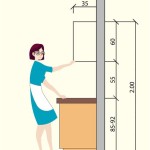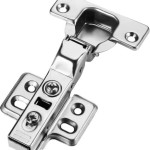Re-Laminating Kitchen Cabinet Doors: A Comprehensive Guide
Kitchen cabinet doors are a vital part of the overall design and functionality of your kitchen. Over time, they can become worn, outdated, or damaged, detracting from the aesthetics and functionality of the space. Re-laminating kitchen cabinet doors is an excellent solution to give your cabinets a fresh and updated look without the hassle and expense of replacing them entirely.
Understanding Laminate
Laminate is a durable synthetic material composed of multiple layers. The surface layer is typically made of a decorative paper or plastic film, providing the desired design and finish. The core layer, usually composed of paper or fiberboard, imparts strength and rigidity. The backing layer helps to balance the laminate and prevents warping.
Benefits of Re-Laminating
Re-laminating kitchen cabinet doors offers numerous benefits:
* Cost-effective: Re-laminating is significantly more affordable than replacing cabinet doors, making it a budget-friendly option. * Versatile: Laminate is available in a wide range of colors, patterns, and textures, allowing you to customize the look of your cabinets to complement any kitchen style. * Durable and easy to clean: Laminate is resistant to scratches, heat, and moisture, making it a practical and hygienic choice for kitchen cabinets. * Environmentally friendly: Re-laminating extends the lifespan of existing cabinet doors, reducing waste and promoting sustainability.Materials Required
Before starting the re-laminating process, gather the following materials:
* New laminate sheets * Contact adhesive * Measuring tape and pencil * Sharp knife or utility knife * Trimming router or sharp chisel * Sandpaper or sanding block * Damp clothStep-by-Step Guide
1. Prepare the Cabinets: Remove the existing laminate from the cabinet doors using a sharp knife or chisel. Ensure to scrape off any residual adhesive. Clean the surfaces thoroughly with a damp cloth. 2. Measure and Cut the Laminate: Measure the cabinet doors and cut the laminate sheets to the desired size. Leave an overhang of about 1/8 inch on all sides. 3. Apply Contact Adhesive: Apply a thin layer of contact adhesive to both the cabinet doors and the laminate sheets. Let the adhesive become tacky before proceeding. 4. Align and Laminate: Carefully align the laminate sheets with the cabinet doors and press them into place, starting from the center and working outwards. Ensure that the edges are flush and that there are no air bubbles. 5. Trim the Excess: Use a trimming router or a sharp chisel to trim the excess laminate around the edges. Sand the edges lightly to smooth them out. 6. Install Handles or Knobs: Reinstall the cabinet handles or knobs to complete the project.Tips for Success
* Use a sharp knife or utility blade for precise cuts. * Apply the contact adhesive evenly and allow it to become tacky before bonding. * Press the laminate firmly into place to avoid air bubbles or wrinkles. * Trim the excess laminate carefully to prevent chipping or tearing. * Protect your work area with plastic or drop cloths to prevent adhesive spills.Conclusion
Re-laminating kitchen cabinet doors is a cost-effective and stylish way to update the look of your kitchen. By following these steps and using quality materials, you can achieve professional-looking results that will enhance the aesthetics and functionality of your kitchen for years to come.
How To Paint Laminate Kitchen Cabinets Perfect Finish Tips

Re Laminate Over Existing Cabinet Jennings

How To Add Trim And Paint Your Laminate Cabinets

How To Paint Laminate Cabinets The Interiors Addict

How Can I Change The Look Of My Kitchen Cabinet Doors Now

How To Paint Laminate Cabinets Everything You Need Know

Kitchen Cupboard Doors Cabinet Replacement Procoat Kitchens

How To Add Trim And Paint Your Laminate Cabinets

How To Update Your Kitchen Cabinets Without Replacing Them Real Estate U S News

How To Paint Laminate Cabinets Everything You Need Know
Related Posts








